Back bulb is the name given to the old cymbidium bulbs which have lost their leaves. These are usually removed from the plant during repotting. If they are firm and not shrivelled I usuall pot them up separately in the potting mix which has been removed form the plant during repotting. They are buried about half way down in the mix as shown in the photo below. It is fairly easy to damage the growth eyes when removing the old husks from the bulbs so I usually leave them on as shown.
|
||
The first example shows 5 bulbs which were potted up in late spring around 6 months ago. Sometimes none will develop, sometimes a few, and sometimes you get a result like this. Six new plants off 5 old bulbs. They could have been left until early spring this year however I decided to knock them out to see how they were going.
|
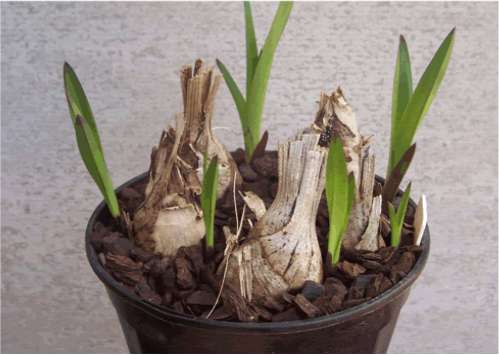 |
|
The picture to the right shows the 5 bulbs out of the pot. New roots are away, even on the smaller bulb to the right. At this stage they caould have been put back into the squat pot until spring but I decided to pot them up into separate 4 inch (100mm) pots. |
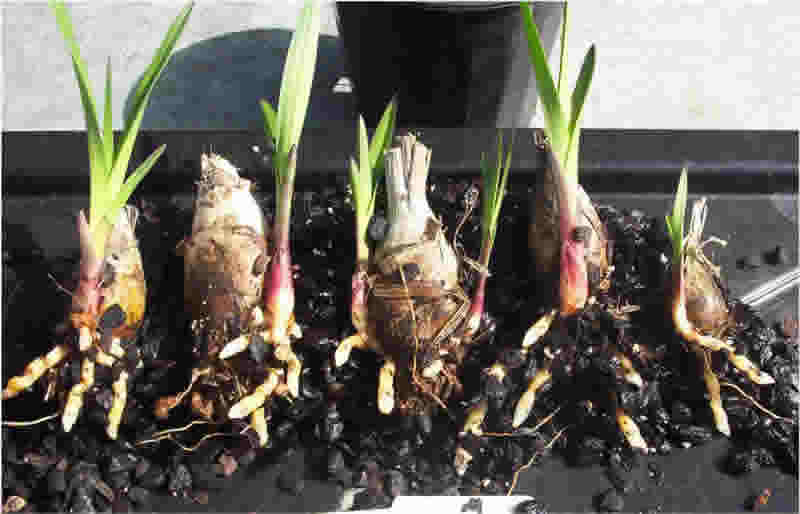 |
|
In this picture the backbulbs have been potted up with the new growth to the centre of the pot where possible. The backbulbs have been left attached to the new growths as it is easy to damage the new growth when removing and I believe they provide a backup for the new growth. If the bulb is soft or badly shrivelled the new growth can be removed by carefully rolling it sideways until it comes away. Try not to damage the roots. (If you're desperate for another plant you can try repotting the old bulb again. With a bit of luck you may get another shoot.) NOTE Keep an eye on the bulbs just in case they go soft after they shoot. If this happens the bulb should be taken out of the pot andthe new growth should be removed and potted up in a suitable size pot. |
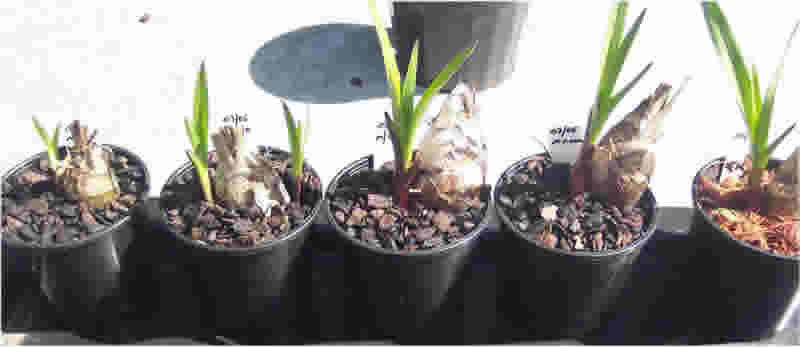 |
|
The mix in the 4 leftmost pots above is 10mm pine bark with a small amount of Canunda shell included to keep the mix ph neutral.
|
||
| February 2006
Well, I've finally found time to finish the backbulbs story. And not
too soon either. |
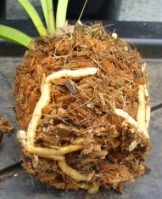
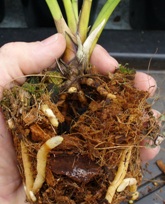 |
|
| This picture show one of the other backbulbs with the growth attached.
To remove the backbulb, get a firm hold on the base of the new growth as
shown and then twist the whole backbulb from side to side. (As shown in
the picture, that would be back around towards the knuckle of the 1st
finger then to the front around to the thumb nail, keeping the top
pointing upwards.) It should separate without problems. If not, you may need to twist the top of the bulb backwards and forwards but take care of the roots. |
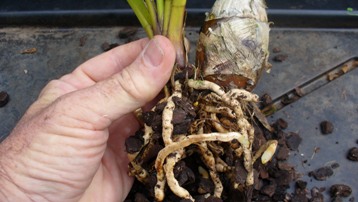 |
|
| This last picture shows the rest of the new plants with the backbulbs
removed and ready to be potted into their new pots. The order of the
plants is the same as pictures above. The 3 smaller plants to the left will be put back into 4 inch pots, the other two into 5 inch. The experiment, in coconut fibre has been put back into the same pot with more mix added to fill the hole. With a bit of luck I should have at least 3 flowering size plants 2 years from now and another 3 on the way. If you have any queries I can be contacted via the email link below. GO TO index for MORE ORCHID CULTURE INFO |
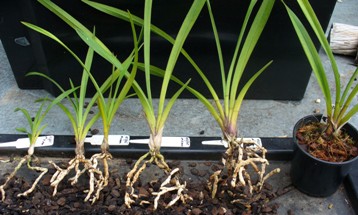 |
|